Customer behaviors are changing across the board, and traditional supply chains from manufacturer to retailer to consumer are being broken and reassembled on a daily basis.
Many brands are responding to this situation in a decidedly reactive manner — engaging in a desperate scramble to find tools to stay relevant and keep customers from leaving en masse. Instead, a brand should be able to stay on top of the bleeding edge of trends while incorporating new methods of reaching customers all without losing the quality of a traditional shopping experience.
Achieving this feat is not easy. Successfully responding to technological advances and commercial upheaval doesn’t mean just throwing potential solutions at a wall to see what sticks. Any efforts made by businesses should be calculated, consistent and ultimately provide a direct benefit to the consumer. Hitting all of these points at the same time can only be achieved through robust digital strategies that emphasize new connectedness with customers and that are backed by the analytical data to support ongoing decisions.
The Face of the New Connected Consumer
The average connected consumer is likely not who you think it is. According to market research, she is a 40 year old woman who makes $63,000 a year. She owns multiple connected devices in addition to her home computer — 43% with a smartphone and 16% with a tablet. Increasingly, consumers are enjoying the experience of shopping on tablets with 49 percent indicating that they assume their tablet shopping will increase within the next year.
Most connected consumers are frequently engaged in social activities online. 81% of customers are active Facebook users, and 34% use a brand or product’s Facebook page as a way to learn more about their offerings.
One of the biggest differences between past consumers and connected consumers is that connected consumers vigorously research products before making a final purchase decision. 88% of consumers look up information before buying in store, checking around 12 different sources on average. Shoppers last year reported spending an average of 15+ hours during the course of researching for holiday shopping. Sources of information they use include professional reviews as well as user reviews and score averages.
A customer is almost equally likely to make a purchase in store after looking for a product online as they are to reverse the process by browsing in store then finding the best price online — both at 70%. Because of the connectivity and access to unprecedented amounts of information, the connected consumer will want fast results, high quality products, added value in the form of warranties or loyalty promotions and competitive prices across the board.
Meeting the Needs of the Connected Consumer
Brands have been employing many different methods to meet the needs of consumers’ demands:
Added Social Value
As a form of added value, brands are providing content, information and promotions through social media avenues. Users of services like Instagram, Facebook and Twitter want to see professionally curated content in addition to the amateur fare provided by friends and family. Brands meet this demand with highly-informative or entertaining content as well as offers designed to appeal with laser precision to their audience demographics. Customers see these interactions as a form of added value that can foster an emotional relationship with a brand. Many businesses are attempting to use these tactics, but their lack of consistency or effort ends up hurting rather than helping.
New Elements to the Customer Journey
The traditional customer journey of discovery through in-store browsing has fallen by the wayside. Now that customers are searching high and low for only the products they want, attempting to guide a purchase decision from start to finish within the confines of a store aisle is no longer practical.
Instead, brands are stepping in with new ways to provide connected consumers with new services at every step of their journey. They do this by including product reviews and information online, along with stock availability and multiple shipment options to give the customer the decision to buy now and wait for the product to arrive or visit the store and get it immediately.
Many companies are also recreating the element of discovery by offering customers more when they come to see a product in person. In store displays for retailers like Best Buy are designed to give comprehensive insight into a products’ benefits and features. They have partnered with companies like Google to create special displays for Chromebooks that include video and hands-on demonstrations.
Other brands are using new ways to guide the consumer experience while simultaneously browsing in store and researching via mobile. Beacon technology allows customers to receive information when they approach certain displays via direct mobile connectivity. The beacons can link customers to reviews, product feature exploration and even targeted special offers. Best of all, the beacons send data back to the retailer to let them know how consumers are navigating their store and which products they are curious about.
Consistency and Oversight
While using the methods outlined above, businesses are also employing new means to enforce quality control and streamline their implementation process. Products like those available from Digital Social Retail give brands the ability to control their communications across multiple platforms. A business can post on several social media accounts, message customers directly through email or SMS and tailor beacon informational hubs all within a simple dashboard. This dashboard also allows the business to see analytical data regarding sales activity, customer demographics and feedback on their practices.
Powerful tools like these allow a comprehensive solution for getting up-to-date with the expectations of the new connected consumer. Get in touch with us to find out more about how simple adding new tools to your digital arsenal can be, and how much of a positive impact they can have on your bottom line.






